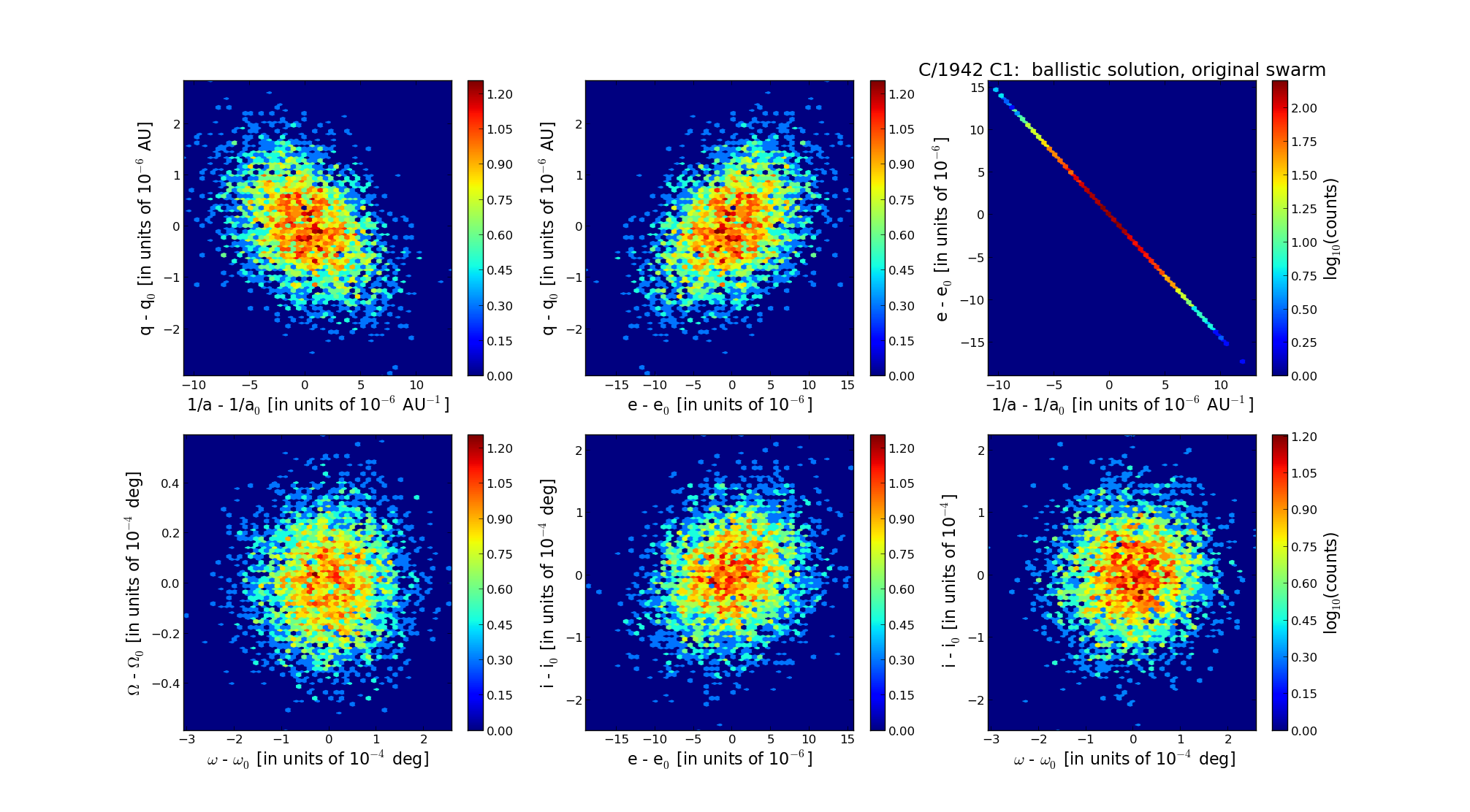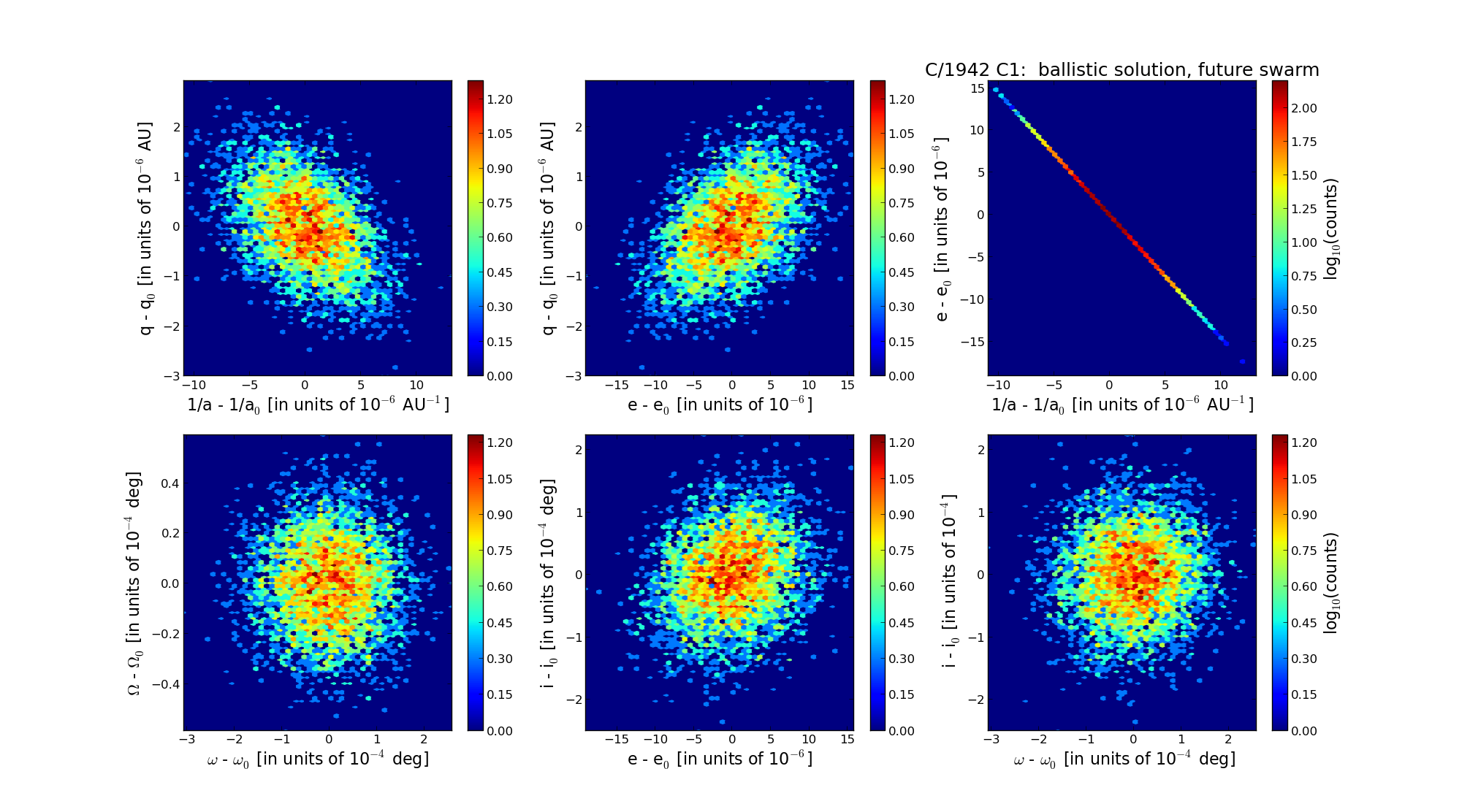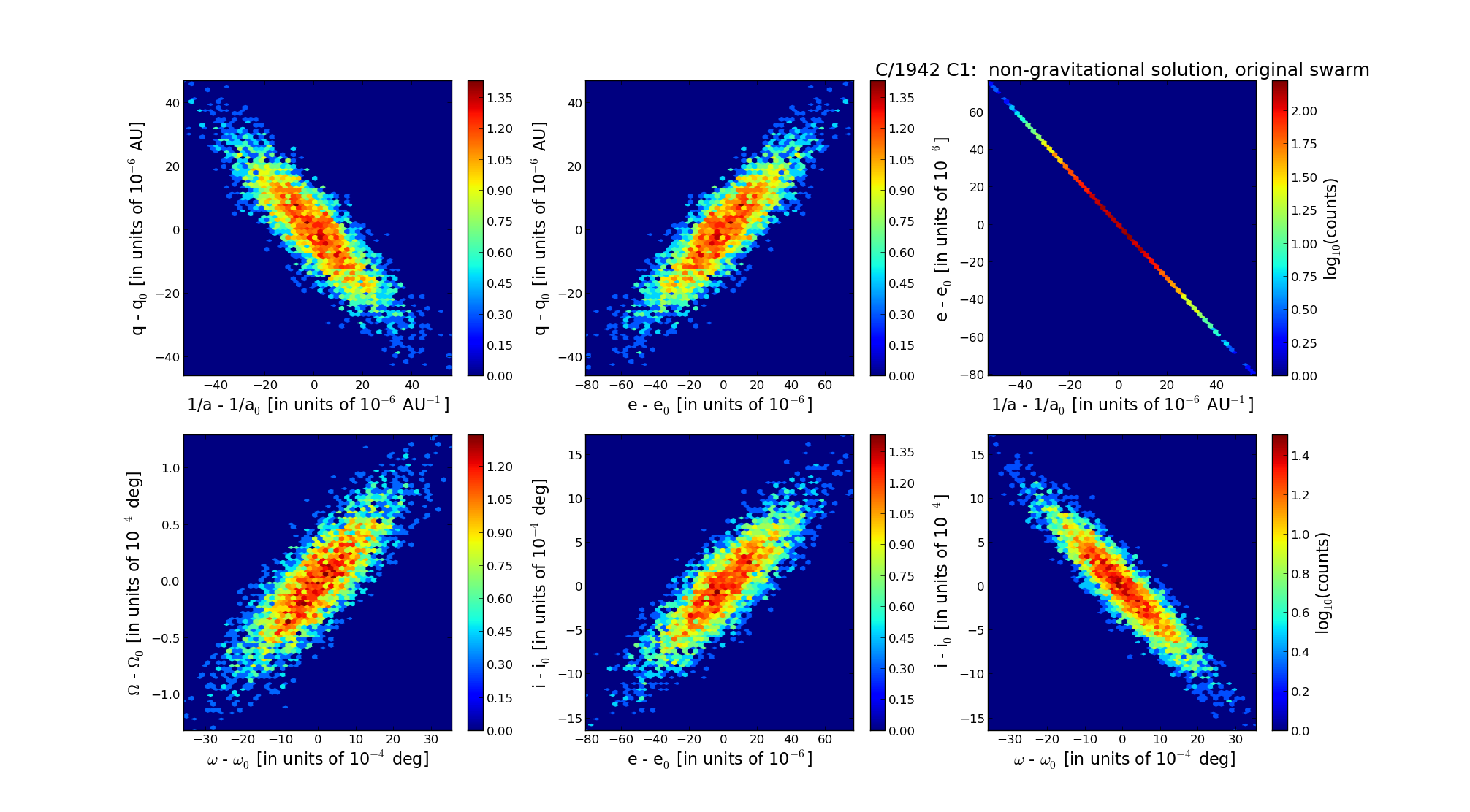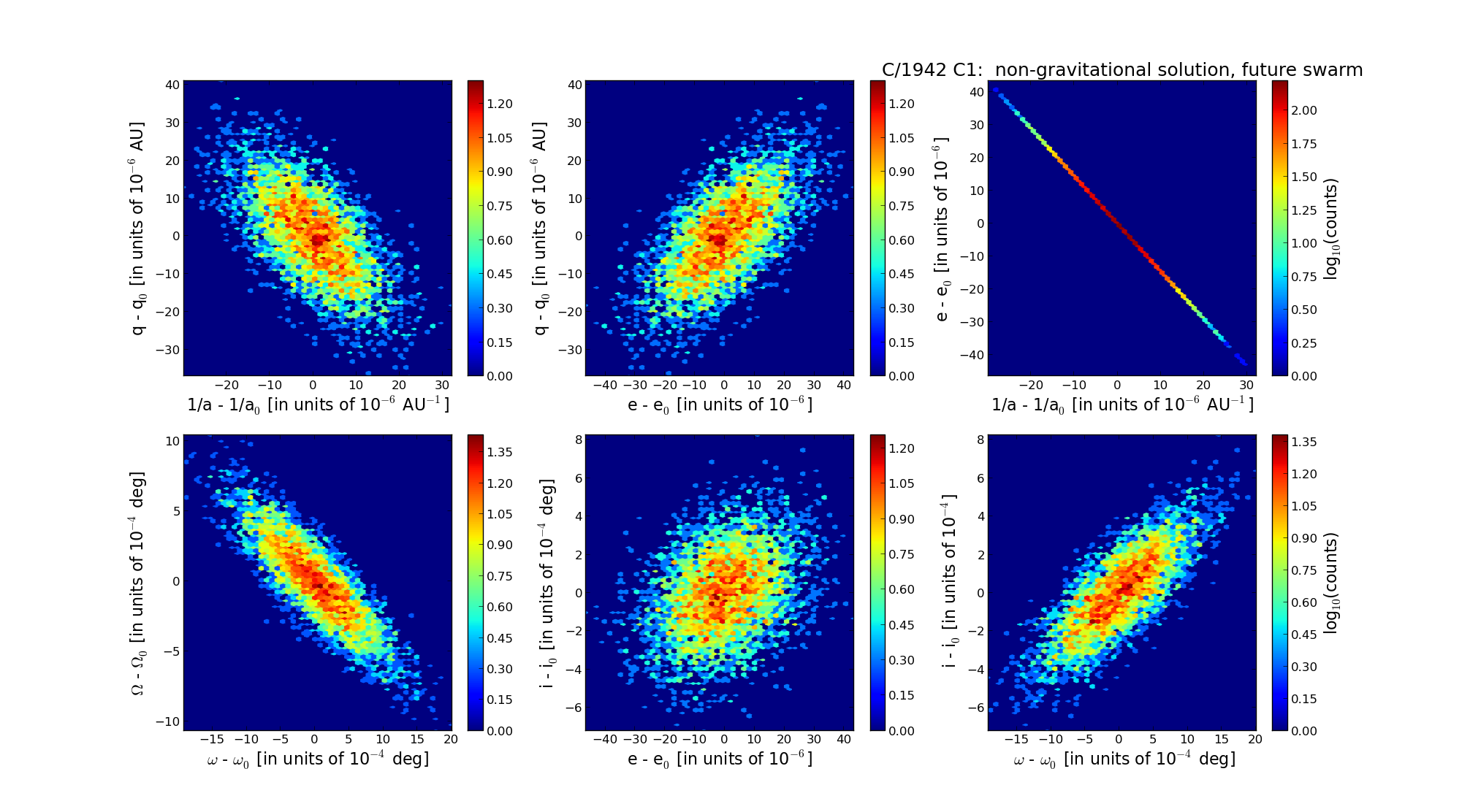| Solar System Dynamics & Planetology Group |
 |
C/1942 C1 Whipple-Bernasconi-Kulin |  |
| Solar System Dynamics & Planetology Group |
 |
C/1942 C1 Whipple-Bernasconi-Kulin |  |
| number of observations | 224 |
| number of residuals | 412 |
| data interval | 1941 Dec. 28 — 1943 Jan. 8 |
| rms [arcsec] | 1.46 |
| orbit quality class | 1a |
| Epoch (TT) | 19420501.0 | = JD 2430480.5 |
| time of perihelion passage (TT) | 19420430.833684 | ± 0.000116 |
| perihelion distance | 1.44530230 | ± 0.00000079 |
| eccentricity | 1.00088319 | ± 0.00000480 |
| argument of perihelion [deg] | 223.415778 | ± 0.000076 |
| longitude of the ascending node [deg] | 340.934552 | ± 0.000017 |
| inclination [deg] | 79.451905 | ± 0.000063 |
| inverse semimajor axis [10-6 au-1] | -611.08 | ± 3.32 |

| Epoch (TT) | 16430217 | |
| time of perihelion passage (TT) | 19420430.110680 | ± 0.000112 |
| perihelion distance | 1.44096429 | ± 0.00000076 |
| eccentricity | 0.99996744 | ± 0.00000481 |
| argument of perihelion [deg] | 223.544907 | ± 0.000077 |
| longitude of the ascending node [deg] | 341.080318 | ± 0.000017 |
| inclination [deg] | 79.489648 | ± 0.000063 |
| inverse semimajor axis [10-6 au-1] | 22.60 | ± 3.33 |

| Epoch (TT) | 22320719 | |
| time of perihelion passage (TT) | 19420430.287518 | ± 0.000120 |
| perihelion distance | 1.44687232 | ± 0.00000079 |
| eccentricity | 1.00117778 | ± 0.00000482 |
| argument of perihelion [deg] | 223.445496 | ± 0.000077 |
| longitude of the ascending node [deg] | 340.917068 | ± 0.000017 |
| inclination [deg] | 79.307804 | ± 0.000063 |
| inverse semimajor axis [10-6 au-1] | -814.02 | ± 3.33 |
| number of observations | 224 |
| number of residuals | 411 |
| data interval | 1941 Dec. 28 — 1943 Jan. 8 |
| rms [arcsec] | 1.23 |
| orbit quality class | 1b |
| Epoch (TT) | 19420501.0 | = JD 2430480.5 |
| time of perihelion passage (TT) | 19420430.834279 | ± 0.000236 |
| perihelion distance | 1.44528980 | ± 0.00000580 |
| eccentricity | 1.00082711 | ± 0.00002112 |
| argument of perihelion [deg] | 223.416090 | ± 0.000147 |
| longitude of the ascending node [deg] | 340.934741 | ± 0.000065 |
| inclination [deg] | 79.451445 | ± 0.000242 |
| inverse semimajor axis [10-6 au-1] | -572.28 | ± 14.61 |
| Nongravitational parameters [10-8 au/day2] | A1 = 1.150 ± 0.545 | A2 = -0.322 ± 0.229 | A3 = -0.739 ± 0.252 |

| Epoch (TT) | 16430108 | |
| time of perihelion passage (TT) | 19420430.111719 | ± 0.000984 |
| perihelion distance | 1.44094260 | ± 0.00001325 |
| eccentricity | 0.99994665 | ± 0.00002241 |
| argument of perihelion [deg] | 223.546319 | ± 0.001010 |
| longitude of the ascending node [deg] | 341.080424 | ± 0.000038 |
| inclination [deg] | 79.488513 | ± 0.000463 |
| inverse semimajor axis [10-6 au-1] | 37.02 | ± 15.55 |

| Epoch (TT) | 22321226 | |
| time of perihelion passage (TT) | 19420430.286227 | ± 0.000390 |
| perihelion distance | 1.44684302 | ± 0.00001091 |
| eccentricity | 1.00112229 | ± 0.00001243 |
| argument of perihelion [deg] | 223.443680 | ± 0.000555 |
| longitude of the ascending node [deg] | 340.917930 | ± 0.000293 |
| inclination [deg] | 79.307463 | ± 0.000203 |
| inverse semimajor axis [10-6 au-1] | -775.68 | ± 8.58 |